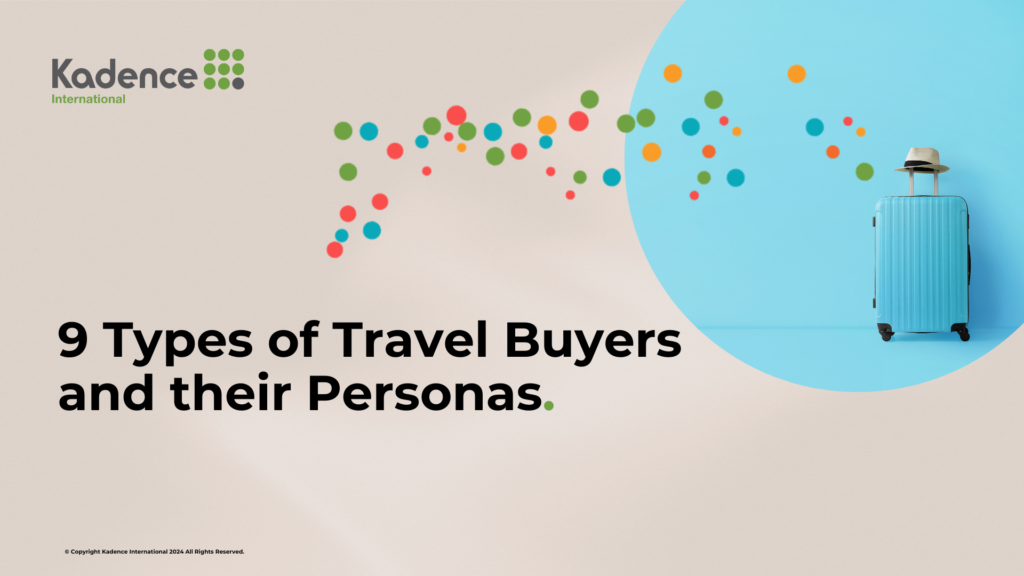Urban mobility is an increasingly lucrative market, attracting significant investment from major brands such as Audi, Baidu, and Amazon. However, the key to unlocking its full potential extends beyond technological advancements.
While innovations like autonomous vehicles and ride-sharing platforms are crucial, they must be paired with a deep understanding of cultural nuances and the specific needs of each city.
Recent advancements in urban mobility highlight the need for tailored solutions. A recent study by McKinsey & Company emphasizes the importance of considering local cultural factors, while the International Transport Forum’s report stresses the necessity of city-specific approaches.
Our comprehensive research with commuters in various global cities further supports these findings, underscoring that technological leadership must go hand-in-hand with cultural understanding.
The Research: Methodology and Findings
Research Overview
Kadence conducted an extensive study involving over 5000 commuters from 13 diverse cities worldwide. The cities included in the research were:
- London
- Berlin
- Singapore
- Shanghai
- Jakarta
- Manila
- Ho Chi Minh City
- New York
- Los Angeles
- Hong Kong
- Mumbai
- Delhi
- Tokyo
The objective was to capture a wide range of commuter experiences and expectations to ensure the findings were applicable across various urban contexts.
Concepts Tested
The study explored several forward-thinking urban mobility concepts to assess commuter interest and acceptance. The concepts tested included:
- Air Taxis: Designed to reduce travel time and alleviate congestion by providing aerial commuting options.
- Environmentally Friendly Commuting Schemes: Initiatives aimed at rewarding commuters for eco-friendly practices, such as using public transport, cycling, or walking.
- Premium Car Hire: High-end, on-demand car services offering luxury and convenience for urban travel.
- Shared Autonomous Vehicles: Self-driving cars that offer shared rides, reducing the number of vehicles on the road and improving traffic flow.
- Smart Public Transport Systems: Enhanced public transport options featuring real-time tracking, improved connectivity, and seamless payment systems.
- Micro-mobility Solutions: Personal transport options like electric scooters and bikes designed for short urban trips.
- Mobility-as-a-Service (MaaS): Integrated platforms providing various transport modes, including public transit, car-sharing, and bike-sharing, through a single subscription.
The study aimed to understand commuters’ preferences, expectations, and concerns by presenting these concepts to them. The findings revealed the importance of considering technological innovation and cultural context in developing effective urban mobility solutions.
Urban Mobility by Region
USA: New York and Los Angeles
Mobility Challenges and Opportunities: Due to their size, density, and urban sprawl, New York and Los Angeles present unique mobility challenges and opportunities. New York is known for its extensive public transportation system but struggles with congestion and aging infrastructure. Los Angeles, on the other hand, is car-dependent, facing significant traffic and pollution issues.
Commuter Preferences: Commuters in these cities strongly prefer luxury and convenience. A study by Deloitte found that 58% of New Yorkers and 65% of Los Angeles residents would pay extra for premium car hire services that offer comfort and convenience. The focus in these cities is on reducing travel time and enhancing the commuting experience through high-end services.
Supporting Data:
- New York: The Metropolitan Transportation Authority (MTA) reports that daily subway ridership is around 2.4 million, highlighting the city’s reliance on public transit despite its challenges.
- Los Angeles: According to the Los Angeles Department of Transportation, the average commuter spends 119 hours per year in traffic, underlining the need for efficient and luxurious alternatives.
UK: London
Unique Infrastructure: London offers a unique blend of historical and modern infrastructure. Its extensive public transportation network includes the Underground, buses, and a growing cycling infrastructure. The city’s commitment to sustainability is evident in its policies promoting green commuting options.
Focus on Sustainability: A report by Transport for London indicates that 36% of Londoners use public transport as their primary mode of travel, and 23% use active modes like walking and cycling. London’s Ultra Low Emission Zone (ULEZ) and congestion charge are key initiatives to reduce pollution and encourage sustainable transport.
Supporting Data:
- Public Transport Use: TfL data shows that bicycle journeys increased by 22% from 2019 to 2022.
- Sustainability Initiatives: The UK Department for Transport reports that London’s ULEZ has reduced harmful nitrogen dioxide levels by 44% in central London.
South East Asia: Singapore, Jakarta, Manila, Ho Chi Minh City
Mobility Challenges and Cultural Attitudes: South East Asia presents diverse mobility challenges and cultural attitudes. Cities like Singapore have advanced public transport systems, while Jakarta, Manila, and Ho Chi Minh City face congestion and inadequate infrastructure.
Singapore: Singapore is known for its efficient and orderly public transportation system. A 2023 study by the Singapore Land Transport Authority (LTA) found that 76% of residents use public transport daily, reflecting a cultural preference for efficiency and orderliness.
Jakarta: Jakarta’s traffic congestion is a significant issue. According to the Jakarta Transportation Agency, the average commuter spends 2 hours in traffic daily. A study by the Asian Development Bank highlights the need for practical and scalable solutions in such environments.
Manila: Manila faces challenges with overcrowded and unreliable public transport. The World Bank reports that only 20% of residents can access reliable public transit. Due to economic constraints, Commuters prefer affordable solutions.
Ho Chi Minh City: Ho Chi Minh City is rapidly urbanizing, and mobility solutions must adapt to these changes. The Vietnam Ministry of Transport report indicates a growing preference for motorbikes and a need for better public transport options.
Supporting Data:
- Public Transport Use in Singapore: LTA data shows a 15% increase in public transport ridership from 2020 to 2023.
- Traffic in Jakarta: The Asian Development Bank report highlights that improving public transport could reduce traffic congestion by 30%.
- Manila’s Transit Issues: The World Bank suggests that investments in infrastructure could improve accessibility for 10 million residents.
- Urbanization in Ho Chi Minh City: The Vietnam Ministry of Transport reports a 10% annual increase in motorbike usage, emphasizing the need for diversified transport solutions.
These findings underscore the importance of tailoring urban mobility solutions to each city’s specific cultural and infrastructural context. Brands must consider these nuances to develop effective and appealing mobility options.
Eastern vs. Western Perspectives
Premium Car Hire Preferences: The research indicates significant differences in the acceptance of premium car hire services between Eastern and Western markets. In Western cities like New York and Los Angeles, there is a higher acceptance and demand for luxury commuting options. This preference aligns with cultural values that emphasize convenience and personal status. A survey by PwC found that 62% of commuters in the United States are willing to pay a premium for enhanced comfort and convenience during their commutes.
In contrast, Eastern cities like Tokyo and Singapore favor premium car hire services more conservatively. Cultural values in these regions prioritize practicality and efficiency over luxury. According to a 2023 study by the Singapore Management University, only 25% of commuters in Singapore are interested in premium car hire services, with the majority preferring reliable and efficient public transportation options.
Cultural Influences:
- Western Markets: Cultural values such as individualism and status play a significant role in commuter preferences. The desire for convenience and the ability to make a statement through one’s choice of transport are prominent. This is reflected in the higher demand for premium services.
- Eastern Markets: Cultural values such as collectivism and practicality influence commuter choices. There is a stronger emphasis on community welfare and efficient resource use, which translates to a preference for public transportation and cost-effective commuting solutions.
Global Trends and Statistics
Urban Mobility Trends: Global urban mobility is evolving, with significant trends emerging worldwide. The International Transport Forum (ITF) reports a steady increase in adopting various urban mobility solutions to address congestion, sustainability, and efficiency.
Latest Statistics:
- Electric Vehicles (EVs): The International Energy Agency (IEA) states that the global stock of electric cars surpassed 10 million units in 2022, with China, Europe, and the United States leading the market. This trend indicates a growing shift towards more sustainable urban mobility solutions.
- Shared Mobility: According to a report by Frost & Sullivan, the global car-sharing market is expected to grow at a CAGR of 16.4% from 2021 to 2026, driven by increasing urbanization and changing consumer attitudes towards car ownership.
- Public Transport Use: The World Bank highlights that cities with well-developed public transportation systems, such as Tokyo, Singapore, and New York, continue to see high ridership levels. For instance, Tokyo’s public transport system serves over 40 million passengers daily, reflecting the importance of efficient and reliable transit options.
Environmental Concerns: A recent study by the World Resources Institute underscores the importance of integrating environmentally friendly practices in urban mobility. Cities like Copenhagen and Amsterdam lead by example with extensive cycling infrastructure and policies promoting green commuting.
Technological Advancements: Autonomous vehicles and smart public transport systems are at the forefront of urban mobility innovation. A report by McKinsey & Company projects that by 2030, autonomous vehicles could account for up to 15% of all new cars sold, driven by advancements in technology and consumer demand for safer, more efficient transport options.
These statistics and trends underscore the dynamic nature of urban mobility and the critical role of cultural understanding in shaping effective solutions. Brands must navigate these cultural differences and leverage global trends to create urban mobility solutions that resonate with diverse commuter preferences.
Implications for Brands
Strategic Importance of Cultural Understanding
Nuanced Approach: Understanding cultural nuances is paramount for brands entering the urban mobility market. A one-size-fits-all strategy is unlikely to succeed due to commuters’ diverse needs and preferences across cities and regions. Brands must adopt a tailored approach, considering local cultural values, commuting behaviours, and infrastructural challenges.
Conduct Localised Research:
- Invest in market research to gather insights into commuters’ specific needs and preferences in each target city. This involves understanding the local cultural context, existing transportation infrastructure and common pain points commuters face.
- Example: Kadence International’s study revealed that Tokyo commuters prioritise efficiency and practicality, while New Yorkers value luxury and convenience.
Collaborate with Local Stakeholders:
- Partner with local governments, transportation authorities, and community organisations to develop solutions that align with regional policies and commuter needs. This collaboration can help in navigating regulatory challenges and gaining local support.
- Example: Uber worked closely with city officials in London to comply with local regulations and enhance its ride-sharing services to meet the city’s sustainability goals.
Customise Offerings:
- Develop mobility solutions that cater to each market’s unique cultural and infrastructural context. This may involve offering a range of services, from premium car hire in Western cities to efficient public transport integrations in Eastern cities.
- Example: Didi Chuxing in China offers various services, from ride-hailing to bike-sharing, tailored to the diverse transportation needs of Chinese commuters.
Leverage Technology:
- Utilise advanced technologies like AI and big data to analyze commuter patterns and preferences. This data-driven approach enables brands to continuously adapt and refine their offerings to better serve different markets.
- Example: Google Maps leverages AI to provide real-time traffic updates and optimised routes, enhancing the commuting experience for users worldwide.
Case Examples in Urban Mobility
Uber:
- Location: Global
- Strategy: Uber tailors its services to meet local needs. In India, UberAUTO was introduced, allowing commuters to book auto-rickshaws through its app and addressing the demand for affordable and convenient transportation. In the United States, UberBLACK caters to users seeking premium travel experiences.
- Outcome: Uber has maintained a strong presence in diverse markets by adapting its offerings to local preferences.
Grab:
- Location: Southeast Asia
- Strategy: Grab has successfully localised its services across Southeast Asia. In Singapore, it emphasises efficiency and integrates with the city’s public transport system. In Jakarta, it offers motorbike taxis to navigate heavy traffic.
- Outcome: Grab’s culturally informed approach has made it a leading mobility service provider in Southeast Asia, with a strong user base and high market penetration.
Lime:
- Location: United States, Europe
- Strategy: Lime provides micro-mobility solutions like e-scooters and bikes tailored to the urban landscapes of cities such as Paris, Berlin, and San Francisco. Lime has resonated well with environmentally conscious commuters by addressing the last-mile connectivity issue and promoting eco-friendly transportation.
- Outcome: Lime’s focus on sustainability and convenience has led to widespread adoption in cities prioritising green transportation options.
By understanding and addressing the cultural nuances of each market, brands can develop effective urban mobility solutions that resonate with local commuters. This culturally informed approach enhances user satisfaction and fosters long-term success in the competitive urban mobility landscape.
Embracing Diversity: The Path to Urban Mobility Success
Cultural Understanding is Crucial: Urban mobility solutions must go beyond technological advancements. Brands must incorporate a deep understanding of cultural nuances to meet the unique needs and preferences of commuters in different cities. This approach is essential for developing successful and sustainable urban mobility strategies.
City-Specific, Culturally Informed Approach: The findings from Kadence’s study and supporting research highlight that a one-size-fits-all approach is ineffective. Instead, brands must adopt a tailored strategy that considers each market’s distinct cultural and infrastructural contexts. By doing so, they can create solutions that resonate with local commuters and address their specific challenges.
Brands must leverage comprehensive insights and tailored strategies to unlock the full potential of urban mobility opportunities. Kadence International is here to help you navigate this complex landscape. Our detailed research and expertise can guide you in developing culturally informed mobility solutions that truly connect with your target markets.




 Senior Marketing Executive
Senior Marketing Executive Sales & Marketing
Sales & Marketing General Manager PR -Internal Communications & Government Affairs
General Manager PR -Internal Communications & Government Affairs Vital Strategies
Vital Strategies
 Customer Intelligence Director
Customer Intelligence Director